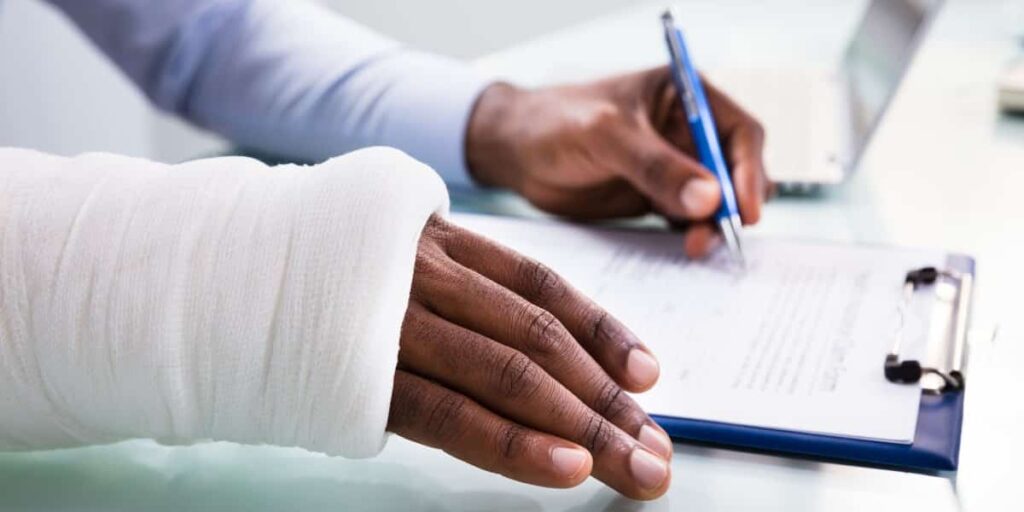Personal injury claims can be daunting and complex, but the process can be relatively straightforward if you know how to go about it. In this article, we will look at what is the best way to make a personal injury claim. We will discuss the key steps involved and provide useful tips to help you achieve a successful outcome. From understanding your rights to building a strong case, we will explore all aspects of making a personal injury claim.
The Best Way to Make a Personal Injury Claim
Making a personal injury claim can be complicated, and it can be difficult to get the outcome you deserve if you don’t follow the right steps. To ensure that your claim is successful, it’s important to understand What Is the Best Way to Make a Personal Injury Claim.
- The first step in making a personal injury claim is to seek medical attention for your injuries and obtain any necessary documentation from your doctor or hospital. This will serve as evidence of the extent of your injuries.
- It’s also important to take photos of any visible damage caused by the incident and keep track of any property damage or lost wages that resulted from it.
- Furthermore, it would help if you tried to secure witness statements from anyone who witnessed the accident; this could prove invaluable when making your case.
What Evidence Do I Need For Personal Injury Claim?
Knowing What Is the Best Way to Make a Personal Injury Claim, you may have a question about what evidence do I need for personal injury claim. Here is the answer. When filing a personal injury claim, it is important to have evidence to support your case. Having the right evidence can be the difference between getting compensated for an injury or not.
Therefore, knowing what types of evidence you need to maximize your chances of success is important. The type of evidence you will need depends on the nature of your particular claim. Common types of evidence can include medical records, witness statements and photographs taken at the accident scene.
- Medical records are particularly useful because they provide Documentation, Proof that an injury has occurred, and Information about any treatments prescribed by doctors.
- Witness statements can be used to establish how an incident occurred and who was responsible for it.
- Photographs taken at the scene can also help prove liability and establish damages caused by a defendant’s negligence or wrongful act.
What Damages Can You Claim For Personal Injury?
In any case of personal injury, you must know What Is the Best Way to Make a Personal Injury Claim and What Damages Can You Claim for Personal Injury. Knowing what damages are available and how they can help you with your physical, emotional, and financial recovery can go a long way in getting the compensation you deserve.
Several types of damages may be available to victims when pursuing a personal injury claim. These include economic losses such as medical expenses, lost wages due to time away from work, and future earning capacity.
Non-economic losses such as pain and suffering; punitive damages, awarded in cases where the defendant acted intentionally or recklessly; and sometimes even reimbursement for legal fees incurred during the litigation. Each state has laws regarding the types of claims that can be made for personal injury based on the type of incident in question.

3 Common Types of Personal Injury Compensation Claims
Personal injury compensation claims are among the most common types of legal cases. This type of claim is filed when an individual has been injured due to the negligence or intentional behavior of another person, business or organization. If you’ve been injured, you can make three basic types of personal injury compensation claims: general, special, and exemplary damages.
- General damages are awarded for physical and emotional pain and suffering that result from an injury. This includes medical expenses incurred from treatment for the injury and lost wages due to time off work for doctor visits or recovery.
- Special damages compensate individuals for economic losses such as property damage or repair bills associated with the accident.
- Exemplary damages provide additional financial compensation for those who have experienced outrageous conduct such as malicious intent, fraud or gross negligence resulting in injuries.
How Long Do You Have To Make A Claim For Personal Injury?
When a person suffers an injury due to another person’s negligence or carelessness, they may be entitled to compensation. Knowing What Is the Best Way to Make a Personal Injury Claim and how long you have to claim for personal injury is important to ensure you receive the justice and financial restitution you are legally entitled to.
Generally speaking, each state has statutes of limitations that establish how much time one has to file a claim for civil damages. This can depend on the type of case as well as where it occurred, so it is essential that anyone considering filing such a claim thoroughly research the relevant laws in their state before proceeding.
In most cases, two years is typically allotted from the date of the accident or injury to file a lawsuit. However, if more than two years have passed since then with Glendale Injury Firm pursuing legal action may no longer be an option.

